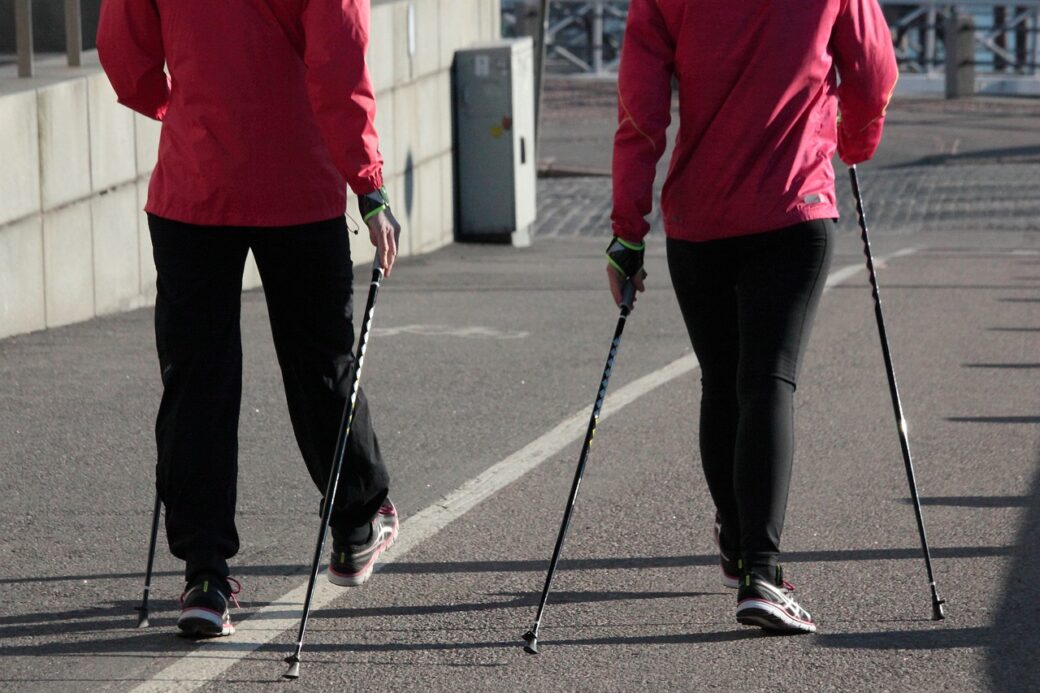
Yes, walking can lower lumbar pain, especially when performed correctly and in moderation.
Here are several ways walking can help with lower lumbar pain…
- Improves Blood Circulation – Walking promotes circulation, which helps deliver nutrients and oxygen to the muscles, joints, and spinal structures in the lower back. Improved blood flow can aid in healing damaged tissues and reduce inflammation.
- Strengthens Muscles – Walking engages various muscles in the legs, hips, and core, including those that support the spine. Strengthening these muscles can provide better support for the lower back and improve overall stability.
- Maintains Spinal Health – Walking helps maintain spinal alignment and flexibility. It encourages gentle spinal movement, preventing stiffness and reducing the risk of developing further back pain.
- Promotes Weight Management – Maintaining a healthy weight through regular physical activity like walking can reduce stress on the spine and lower back joints. Excess weight can contribute to increased pressure and strain on the lumbar region.
- Enhances Mood and Reduces Stress – Walking is a low-impact aerobic exercise that can release endorphins (natural painkillers) and improve mood. Reduced stress levels can help alleviate muscle tension and promote relaxation in the lower back.
Tips for Walking with Lower Lumbar Pain
- Start Gradually – If you’re new to walking or have been inactive, start with short walks and gradually increase your duration and pace as tolerated. Listen to your body and avoid overexertion.
- Use Proper Footwear – Wear supportive and comfortable shoes that provide cushioning and stability. Good footwear can help absorb shock and reduce impact on the spine.
- Maintain Good Posture – Pay attention to your posture while walking. Keep your head up, shoulders back, and abdomen gently pulled in. Avoid slouching or leaning forward, which can strain the lower back.
- Warm Up and Cool Down – Before walking, perform gentle warm-up exercises or stretches to prepare your muscles and joints. Afterward, cool down with stretches to maintain flexibility and prevent stiffness.
- Listen to Your Body – If walking exacerbates your pain or discomfort, reduce your pace, take breaks, or consider alternative exercises. Find a balance that allows you to exercise without causing undue stress on your lower back.
When to Consult a Healthcare Provider
If your lower lumbar pain persists or worsens with walking, or if you experience additional symptoms such as numbness, tingling, or weakness in the legs, it’s advisable to consult a healthcare provider. They can evaluate your condition, recommend appropriate treatments or modifications to your exercise routine, and address any underlying issues contributing to your back pain.
Walking helps with lower lumbar pain as it promotes spinal health, strengthens supporting muscles, and enhances overall well-being. Incorporate walking into your daily routine gradually and with proper technique to maximize its benefits for your lower back health.
Related Posts
What Is The Best Painkiller For Lumbar Pain?
On
November 16, 2024
What Causes Lower Back Pain Just Above The Buttocks?
On
January 30, 2025
How To Rehab A Lumbar Strain?
On
May 5, 2024
What Is The Best Treatment For Lumbar Spine?
On
November 13, 2024


